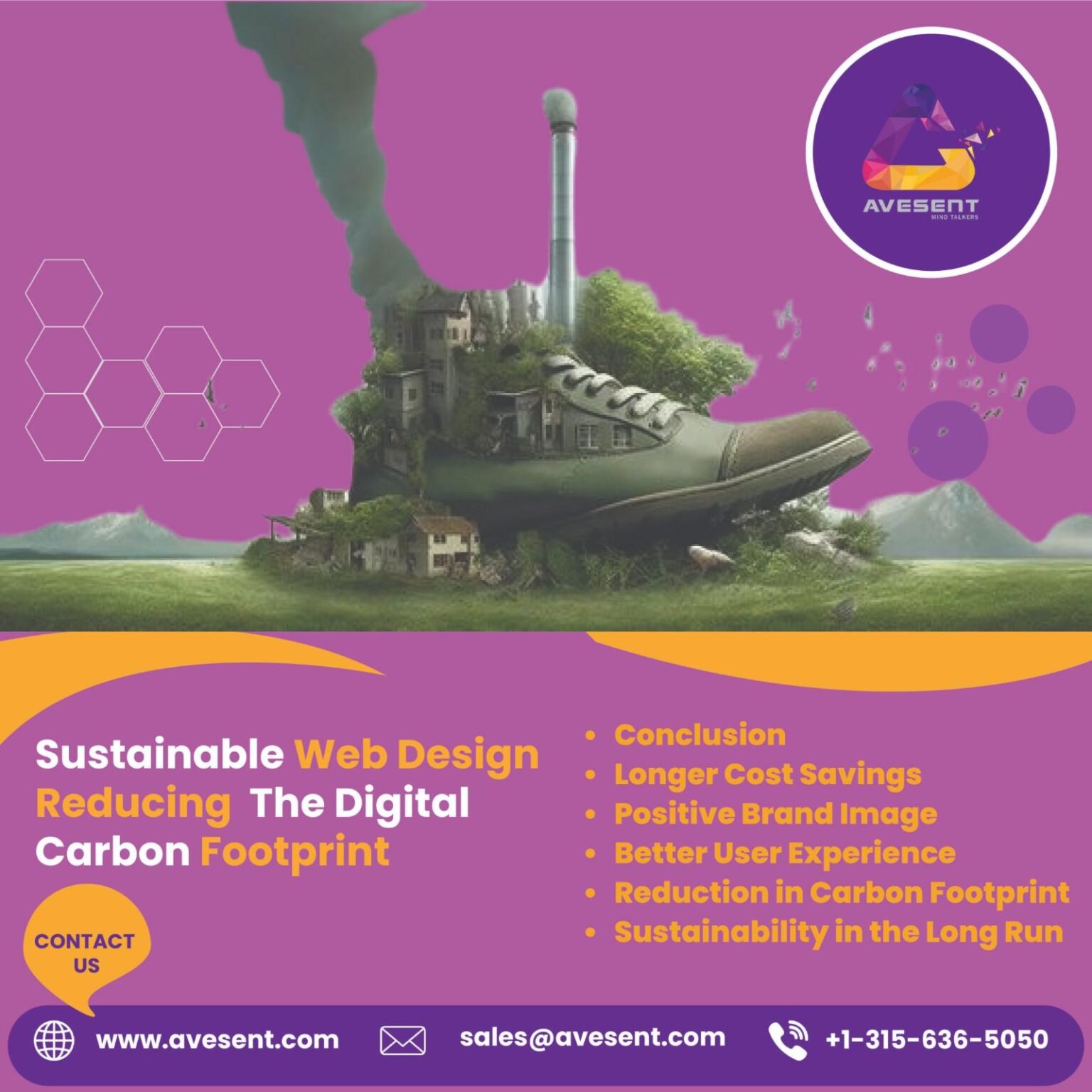Websites have become an indispensable component of our lives in the current digital era. We utilize them for a range of things, such as information, entertainment, and business. But have you ever considered how the websites we browse and make affect the environment? The internet has a carbon impact, much like other facets of our existence, thus it’s time to discuss environmentally friendly site design. We’ll discuss sustainable web design in this blog and how it can lessen the digital carbon footprint.
The Digital Carbon Footprint: An Overview
Let’s first define the digital carbon footprint before we discuss sustainable web design. A website you visit will transport data from its servers to your device each time. Data centers that run on electricity provide the energy needed for this data transit. Burning fossil fuels for the creation of this power frequently results in the emission of greenhouse gases into the atmosphere, which contributes to climate change.
What is sustainable web design?
Focus is placed on developing and maintaining websites that have the least negative impact on the environment. It involves creating websites in a way that uses less energy, emits less carbon dioxide, and encourages eco-friendly behavior.
As an example of sustainable web design concepts, consider these:
Efficient Coding: The core of sustainable web design is writing clear, efficient code. Websites load more quickly and use less energy as a result of the reduced quantity of data that must be sent.
Optimized Images and Media: Large, inefficient images and media files can cause websites to load slowly and use more energy. Utilizing compressed and properly sized images and media is essential for sustainable web design.
Energy-efficient hosting: It’s important to pick a web host that makes use of green energy sources or is dedicated to lowering its carbon impact. As a result, the energy utilized to power the servers is as environmentally friendly as feasible.
Minimalistic Design: A website’s more straightforward design improves user experience while using less energy. Processing power is needed less when there are fewer intricate images and animations.
Load balancing: By effectively distributing online traffic among several servers, energy consumption can be decreased. Load balancing is frequently used in sustainable web design to make sure that no single server is working too hard.
Why Eco-Friendly Web Design is Important
Reduction in Carbon Footprint: Green web design directly lowers the carbon emissions linked to internet use. We can lessen the negative effects of the digital world on the environment by making websites more effective.
Better User Experience: Sustainable web design frequently leads to faster website loading, which improves user experience. A website that loads quickly and is simple to use will keep users on it
Longer Cost Savings: Sustainable web design can lead to lower hosting costs due to reduced energy consumption. This can be especially beneficial for businesses looking to cut expenses.
Positive Brand Image: Businesses that put sustainability first when designing their websites convey a clear message to customers. It shows a dedication to environmental responsibility, which can improve a brand’s reputation and draw in eco-aware customers.
Sustainability in the Long Run: As environmental concerns intensify; sustainable web design will spread as a best practice. Businesses may secure their websites and operations for the future by implementing these principles now.
Conclusion
In our fight against climate change, sustainable online design is more than just a trend. We have the authority to demand environmentally friendly methods of web development and design as consumers and users. We can all work together to lower the digital carbon footprint and make the internet a better place by selecting web designers and hosting companies that prioritize sustainability. Together, let’s make sure that the websites we build and visit have a beneficial effect on the environment.




